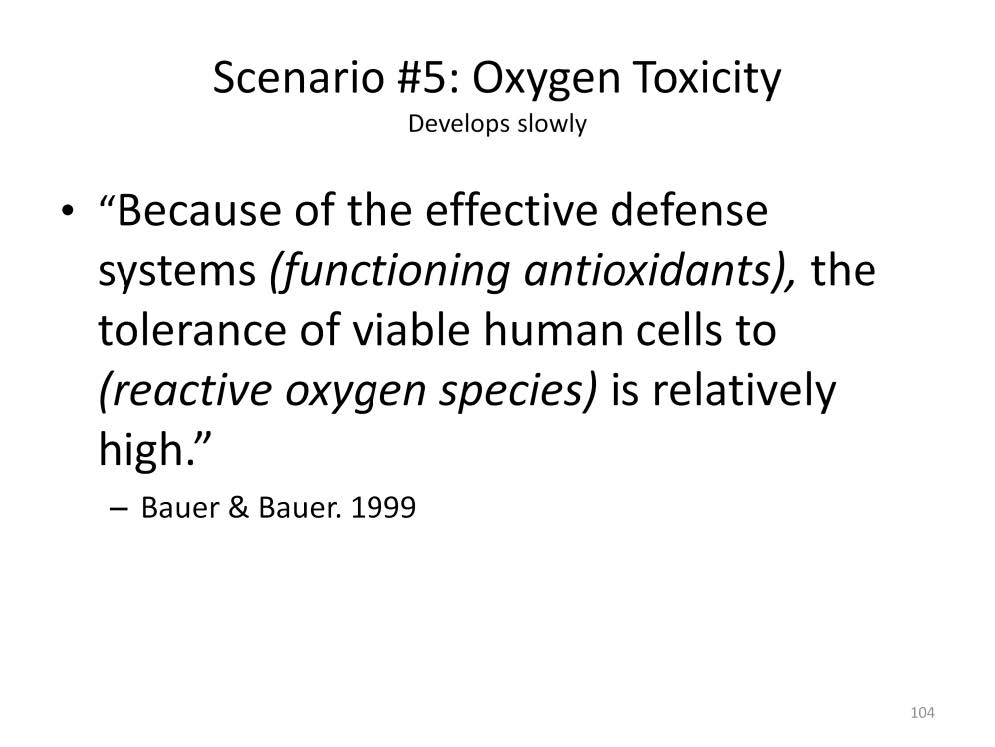
Bauer V, Bauer F. Reactive oxygen species as mediators of tissue protection and injury. Gen Physiol Biophys 1999;18 Spec No:7-14.
“Extensive research efforts during the last three decades resulted in a large body of experimental evidence that suggests an important role of the disbalance between generation and elimination of the oxygen and xenobiotic derived free radicals in physiological and pathological processes. Reactive oxygen species (ROS) are generated in many metabolic pathways, and are entering the organisms from exogenous sources, dominantly via airways and gut. ROS induced injuries, e.g. thermal, chemical, radiation, ischaemia/reperfusion, inflammation, hyperoxia, etc., result in diseases like atherosclerosis, ulcerative colitis, autoimmune diseases, asthma, etc. The current paper is designed to provide an overview of the effects ROS may exert in various tissues. Because of the effective defense systems, the tolerance of viable human cells to ROS is relatively high. The oxidant stress induced dysfunction of various systems, such as the gut, airways, nervous, cardiovascular system, etc., involve both direct and indirect mechanisms. Understanding of these molecular mechanisms is essential for a rational antioxidant therapy.”

Perfusion Theory is an educational platform for the Oxygen Pressure Field Theory (OPFT). August Krogh’s theoretical concept of the oxygen pressure field is explained and then applied to clinical applications in perfusion practice.